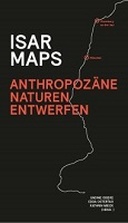Explore

Isar Maps
0 Ungluers have
Faved this Work
Login to Fave
Using the Isar River – a river system perceived as wild but highly technically regulated – as an example, we explored at the Department of Landscape Architecture + Open Space Planning (TU Berlin) in 2019 – how to develop strategies for Anthropocene natures. The challenge was to develop narratives, design strategies, and action programs in the new geochronological epoch of the Anthropocene that focuses on the increasingly complex and inextricably interwoven human-nature-technology relationships – and thus addressing future fields of landscape architecture. Key theoretical texts from different schools of thought such as actor-network theory, urban-rural metabolism, and ethnological approaches to cosmologies attuned us to the task, as well as in-depth studies of the Isar river system on site. The result is an inspiring range of designs. These include the “Isar Gschichten”, in which physical interventions at a reservoir or a garbage mountain make their imprint as natural-cultural assemblages perceptible as an aesthetic experience. The design "Phosphor Mining Munich" shows how the phosphorus cycle can be closed locally between a newly developing residential area, a reservoir and the adjacent agriculture in the sense of a circular economy. In the case of the “Fish Loading Station”, fish as non-human actors are placed at the centre of the design. Using the reservoir as an example, the design demonstrates how the Isar can become a better habitat for fish through redesign, without obscuring the technical interventions and instead understanding them as a design feature of the site.
This book is included in DOAB.
Why read this book? Have your say.
You must be logged in to comment.
Rights Information
Are you the author or publisher of this work? If so, you can claim it as yours by registering as an Unglue.it rights holder.Downloads
This work has been downloaded 43 times via unglue.it ebook links.
- 43 - pdf (CC BY) at Unglue.it.
Keywords
- Anthropocene
- design strategies
- Geography
- human-nature-technology entanglements
- ISAR
- Landscape
- landscape architecture
- Nature
- Regional & area planning
- The environment
Links
DOI: 10.14279/depositonce-16927Editions

